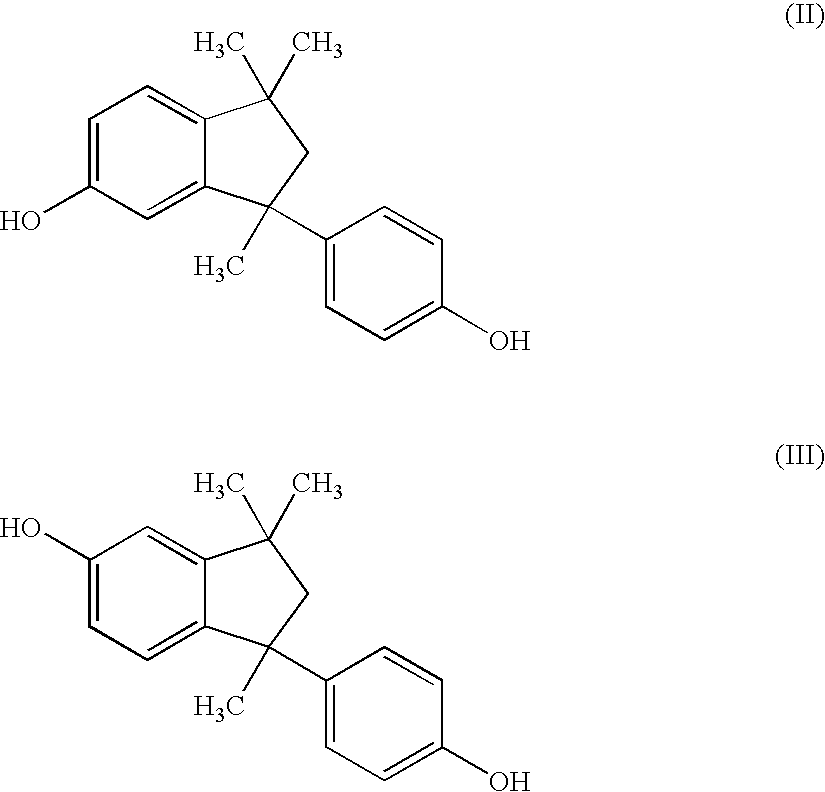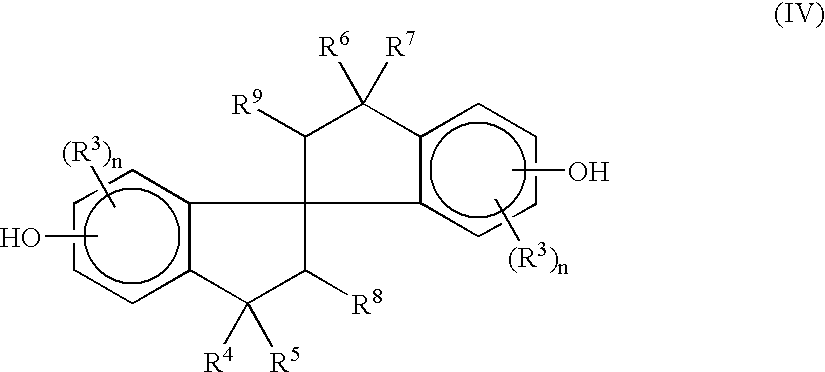Weatherable multilayer articles and method for their preparation
a multi-layer resin and weathering technology, applied in the direction of synthetic resin layered products, chemistry apparatus and processes, transportation and packaging, etc., can solve the problems of long-term color instability of resinous articles, detracting from its transparency and attractiveness, and yellowing of polymer resin
- Summary
- Abstract
- Description
- Claims
- Application Information
AI Technical Summary
Benefits of technology
Problems solved by technology
Method used
Image
Examples
example 3
[0065] Laminates prepared by compression molding of copolyestercarbonate-polycarbonate film assembly over unsaturated polyester resin SMC with tielayer: Class A unsaturated polyester resin (UPR) SMC from Jet Molding Company was used in this example. The polyester film tielayer used was EXF304 film in 5 mil thickness obtained from Adhesive Films, Inc. A copolyestercarbonate-polycarbonate film assembly was put on top of about 600 grams of the UPR SMC charge with polyester tielayer film placed between the SMC and the polycarbonate side of the copolyestercarbonate-polycarbonate film assembly. The entire assembly was placed in a compression molding press equipped with a 12 inch by 12 inch plaque mold. It was heated on both sides at 135.degree. C. under 13.79 megapascals pressure for 4 minutes under vacuum to ensure the complete cure of the SMC. The film adhesion to the SMC was found to be excellent. The peel strength was 5657 Newtons per linear meter.
example 4
[0067] Laminates prepared by compression molding of copolyestercarbonate-polycarbonate film assembly over unsaturated polyester resin SMC with tielayer: Class A unsaturated polyester resin SMC (type 971A) from Budd Company was used in this example. The polyester film tielayer used was EXF304 film in 5 mil thickness. A copolyestercarbonate-polycarbonate film assembly was put on top of a 600 gram UPR SMC charge with polyester tielayer film placed between the SMC and the polycarbonate side of the copolyestercarbonate-polycarbonate film assembly. The assembly was then molded under conditions identical to those of Example 3. The film adhesion to the SMC was found to be excellent. The peel strength was 7268 Newtons per linear meter.
example 5
[0069] Adhesion Environmental Stability Tests: BMC multilayer structures were prepared as in Example 1-2 and subjected to a full cycle crack resistance test under varying conditions of temperature and humidity. Each full cycle involved holding the sample successively for 24 hours at 84.degree. C., 16 hours at 38.degree. C. and 98% relative humidity, 6 hours at minus 29.degree. C., and 2 hours at 23.degree. C. Each sample was subjected to 15 cycles. All samples were visually inspected after the full cycle crack test and were found to have no macroscopic delamination or other film-related failure. The treated samples were then cut into one inch by eight inch test specimens for 90 degree peel test at one inch per minute crosshead separation speed. The measured peel strength was 2767 Newtons per linear meter. The result showed that adhesion provided to copolyestercarbonate-polycarbonate film assembly over TSN by the polyester tielayer is environmentally stable, as adhesion strength rema...
PUM
| Property | Measurement | Unit |
|---|---|---|
| Fraction | aaaaa | aaaaa |
| Fraction | aaaaa | aaaaa |
| Percent by mass | aaaaa | aaaaa |
Abstract
Description
Claims
Application Information
 Login to View More
Login to View More - R&D
- Intellectual Property
- Life Sciences
- Materials
- Tech Scout
- Unparalleled Data Quality
- Higher Quality Content
- 60% Fewer Hallucinations
Browse by: Latest US Patents, China's latest patents, Technical Efficacy Thesaurus, Application Domain, Technology Topic, Popular Technical Reports.
© 2025 PatSnap. All rights reserved.Legal|Privacy policy|Modern Slavery Act Transparency Statement|Sitemap|About US| Contact US: help@patsnap.com



